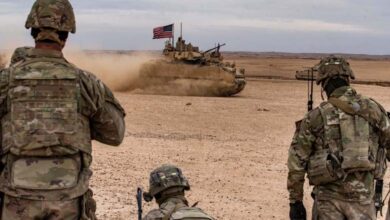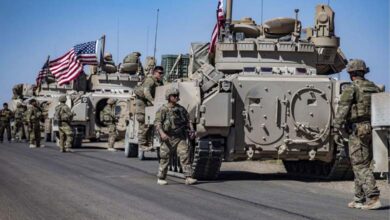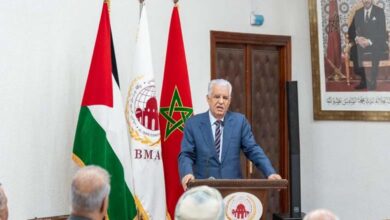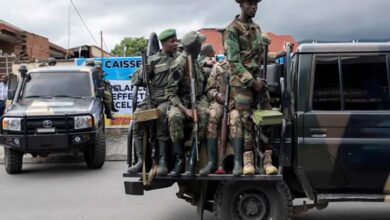Muslim Brotherhood Split over Iran Support Reveals Fragility of Its International Organization

As military tensions between Israel and Iran escalate, an unexpected rift within the Muslim Brotherhood has taken center stage. The organization’s rival factions issued opposing statements, reigniting questions about the unity and coherence of the Brotherhood‘s global structure after years of setbacks and internal schisms.
-
Iran as a potential haven for the Muslim Brotherhood if they leave Qatar.. How?
-
German Analyst Reveals: Our Country Fights All Terror Centers and Organizations Affiliated with Iran and the Muslim Brotherhood
In a statement issued by the London-based faction led by Salah Abdel-Haq, the Egyptian branch of the Brotherhood expressed support for Iran in the face of what it called “Israeli aggression,” affirming Islamic unity and full solidarity with Tehran.
This position sparked immediate backlash from the Syrian Brotherhood, who issued a statement rejecting the Egyptian faction’s stance and labeling both sides in the conflict as “criminal actors who have devastated the region,” according to their official accounts monitored by Independent Arabia.
-
Reasons Behind the Sudan-Iran Rapprochement and the Connection to the Muslim Brotherhood
-
How Does Iran View the Muslim Brotherhood?
The contradiction exposed the growing fragmentation of a group founded in 1928 that evolved into a global network through charitable and political fronts. Recent years, however, have seen a sharp decline in internal cohesion, as noted by Islamic movements expert Nathan Brown in previous remarks to Independent Arabia. He described the international organization as a “loosely structured entity” lacking real mechanisms for controlling national branches or resolving internal disputes.
Brown cited a telling incident in which leaders of a major Islamist movement inspired by the Brotherhood in an Arab country could not recall the name of the Egyptian group’s Supreme Guide—highlighting the disconnect between the center and its affiliates. Analysts like Amr El Shobaki from the Al-Ahram Center for Strategic Studies argue that this divide reflects what he calls “the end of the international Brotherhood model.”
-
Why Iran Views the Muslim Brotherhood as Mercenaries
-
Iran Has Close Ties with the Muslim Brotherhood Despite Sectarian Differences… Details
He explained that political and social differences between local contexts—for example, Syria’s experience with direct Iranian intervention—explain why the Syrian Brotherhood rejects any sympathy with Tehran, while Egyptians harbor no such animosity.
In the same vein, researcher Ahmed Sultan told Independent Arabia that the London faction’s statement reflects an attempt to offset its organizational weakness in Egypt by emphasizing cross-border influence. He sees the clash between the Syrian and Egyptian factions as part of a broader conflict between the London wing and the Istanbul-based faction led by Mahmoud Hussein. This split, which erupted after 2013, has evolved into a struggle marked by mutual suspensions and expulsions.
-
Did Iran Arm a Muslim Brotherhood Cell Linked to Hamas to Carry out Attacks in Jordan?
-
Iran and Hamas Tried to Build a Military Organization in Jordan… Latest Developments in the Muslim Brotherhood Cell Case
Regional dynamics have further widened internal divisions. Turkish support, which once shielded the Brotherhood since 2013, has receded as Ankara began restoring ties with Cairo, Riyadh, and Abu Dhabi. As a result, Brotherhood media outlets in Istanbul have faced restrictions, reduced activity, and bans on anti-government rhetoric.
According to Shobaki, each Brotherhood branch now operates based on local priorities, disconnected from the old globalist vision. The idea of a unified Islamic nation has become a mere rhetorical slogan without any real organizational or political basis. Brown concurs, noting that the goal of uniting Muslims under a single political entity is no longer part of the Brotherhood‘s agenda, as it is increasingly preoccupied with internal strife and failed local experiences.
-
Iran Bans Broadcast of “Al-Hashashin” Series – What’s Its Connection to the Muslim Brotherhood?
-
The Muslim Brotherhood and Iran… Alliances to Achieve Agendas
The dispute coincides with the Brotherhood’s collapse in several countries—such as Egypt, Sudan, Tunisia, Morocco, and Jordan—where it has been banned, designated as a terrorist organization, or stripped of financial resources. In this climate, the organization’s unified political and religious messaging has begun to erode.
Farghaly believes that host countries like Turkey and Qatar do not directly intervene to resolve internal disputes but occasionally leverage their influence to align positions in ways that serve their own interests. However, these interests may not remain constant given the shifting priorities in the region.
-
Sudan: Arena of Iranian and Brotherhood Influence
-
Iran and the Muslim Brotherhood: A historical relationship
-
Iran and the Muslim Brotherhood: Historical relations












